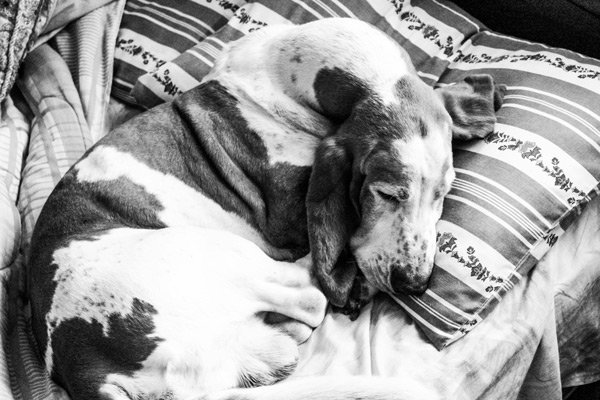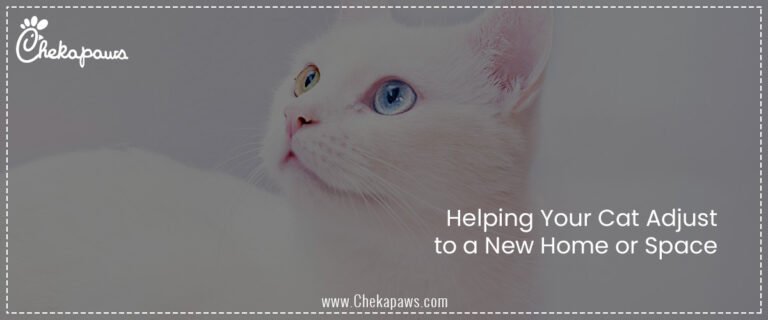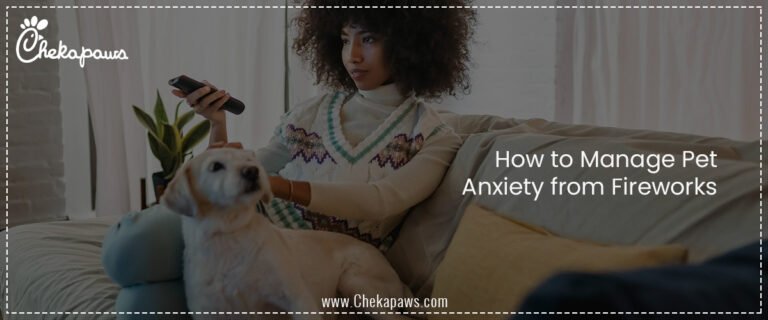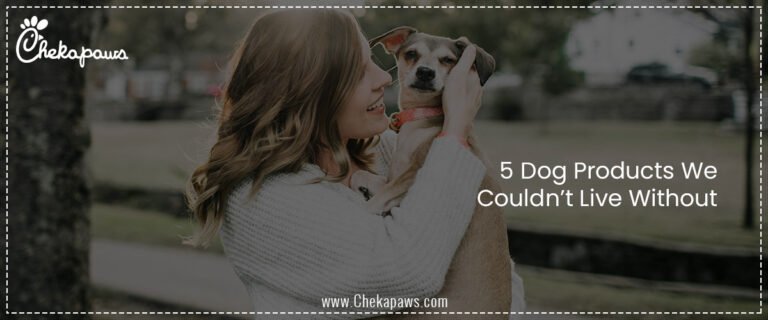I know from being a pet parent that a tiny flurry of paws, curiosity, and naps deserves a bed that keeps them cosy, secure, and teaches them good sleeping habits. The importance of a good bed, how to choose by size, age, or breed, important materials and features, the best types of beds, cleaning and durability advice, safety and housetraining considerations, eco-friendly and affordable options, and a carefully selected list of the best puppy bed picks with reasons why each one is noteworthy are all covered in this guide.
As a seasoned content writer who values useful, veterinarian-friendly guidance, I wrote this. Whether you’re looking for a quick shopping list or a comprehensive companion that answers all of your questions, keep reading.
Table of Contents

10 essentials to pick the right puppy bed
- Size does matter now and in the future. Select a puppy bed that is both comfortable and roomy for growing, or one that you can switch out as the puppy gets bigger.
- There is no compromise on washability. Covers that are machine-washable save you time and trouble because puppies mishap, shed, and play rough.
- The type of support depends on breed and age. For larger breeds, memory foam or thicker support works well, for small breeds and nervous puppies, soft doughnut and cuddling beds work well.
- Strengtheners aid in neck support and security. Puppies might feel more like they are in a den and have a head pillow thanks to raised edges.
- If your dog is a chewer, it should be chew-resistant or chew-proof. Durable, strengthened seams and exterior layers that discourage chewing are prioritised by certain brands and materials.
- Materials that are safe and nontoxic. If you’re concerned about off-gassing, go for low-VOC, non-toxic foams and compliances
- Safe, non-toxic materials. If off-gassing is a concern, look for low-VOC, non-toxic foams and certifications.
- Compatible with crates. Choose a bed that is made for crate use or that fits the crate floor if you crate-train.
- Climate and temperature. In hotter areas, cooling gel or breathable textiles are beneficial; in colder climates, insulating, plush beds are preferable.
- Trade-off between lifespan and budget. While higher-quality beds often last longer and function better, cheaper beds may be OK in the short term.
Why a puppy needs a different approach than an adult dog
Puppies are more than just “mini adults.” Their behaviors, physical growth, and sleep habits necessitate distinct considerations:
Fast growth: The skeletal and joint tissues of a puppy are still growing. Joint comfort can be improved by supportive surfaces, particularly for large-breed pups approaching rapid growth periods. For breeds that are prone to joint issues, supportive foam is advised by veterinarians and pet health websites.
PetMD
Accidents and housetraining: Expect a lot of cleaning. Lifesavers are beds with waterproof liners or detachable, machine-washable coverings. Washability is emphasized as a primary criterion in numerous testing manuals and consumer websites.
Anxiety and denning instincts: A lot of puppies look for places that are confined and nest-like. For young pups, doughnut, bolstered, or burrow beds help lower anxiety and enhance the quality of their sleep. Calm beds for nervous pups are frequently highlighted in reviews and tests.
Teething and chewing: Chewing is common. Prioritize chew-resistant materials or provide supervision throughout the intense teething window if the bed will be left unattended with a puppy going through the teething process.
Types of dog beds & when to choose each
Common bed types and puppy situations in which they excel are listed below.
- Doughnuts, cuddlers, and peaceful beds
- They are round, have elevated edges, and have a soft center
- Ideal for: Curling up, nervous puppies, and small breeds.
- Advantages: Comfortable and cosy; bolsters can be used as pillows.
- Cons: Not ideal for puppies who require solid joint support or who enjoy stretching.
Cave/Burrow Beds
- What they are: Cave-like tops or partially enclosed beds with a hood.
- Ideal for: Small breeds, dogs who appreciate a den, and anxious puppies who prefer hiding.
- Advantages: Offers warmth and security and is great for anxiety.
- Cons: If the cave is integrated, cleaning will be more difficult; in hotter areas, it may be overly heated.
Bolster & Pillow Beds
- What they are: beds that are circular or rectangular and have elevated edges on one or more sides.
- Ideal for: Crate use; puppies who prefer to put their heads on an edge.
- Advantages: A good balance between softness and support.
- Cons: Heavy chewers may be able to damage edge seams.
Crate Pads & Mats
- What they are: Crate-fitting, thin matting or sturdy pads.
- Ideal for: Travel, interim bedding, or crate training.
- Advantages: Portable and frequently machine-washable. Crate-compatible washable mattresses are listed as one of the best puppy options in the Spruce Pets recommendations.
- Cons: May flatten more quickly; less supporting for extended naps.
Materials: what to look for and what to avoid
The bed of a puppy is a microenvironment. Comfort, safety, durability, and hygiene are all impacted by materials.
Fill Materials
- Memory foam and high-density foam are the best options for orthopedic comfort and long-term support. To reduce off-gassing, choose CertiPUR or other low-VOC certifications whenever feasible. Memory foam beds are recommended by PetMD and testing sources as the best options for support.
- Budget beds and bolsters frequently use polyester or polyfill fibres, which are soft but compressible and less long-term supportive.
- Recycled/eco fills: For consumers that care about the environment, some brands provide recycled polyester or plant-based fills. The Good Trade promotes eco-friendly, non-toxic dog beds.
Covers & Fabrics
- Puppies that prefer warmth or burrowing will find this microfiber and fluffy sherpa to be incredibly cosy and pleasant.
- Canvas, ballistic nylon, or ripstop: These materials are more resilient and frequently resistant to abrasion and water, making them ideal for outdoor use or chewing puppies.
- Cooling textiles: Mesh or breathable polyester mixes are beneficial for puppies that sleep hot or in warm locations.
Liners & Waterproofing
The fill is safeguarded and cleaning is made easier with built-in waterproof liners or detachable, waterproof inner layers. Waterproof liners and detachable coverings are essential for young puppies and are found in many of the best low-cost options.
Safety considerations
- Non-toxic materials: Seek out fabrics free of phthalates, low-VOC foams, and non-toxic dyes. Look for companies that promote natural latex, organic cotton, or third-party environmental certifications if sustainability is a priority.
- No minor components: Steer clear of beds with buttons, tiny ornamental elements, or weak zippers that can be chewed off by inquisitive puppies.
Size guidance — pick for now & the future
Selecting the appropriate size creates a balance between growth and quick comfort
- In order to account for head/shoulder space and future growth, measure your puppy when stretched out from nose to base of tail and add around 8 to 12 inches. Large breeds require a bed that will remain comfortable as they grow, whereas little breeds can typically get by with a small or extra-small bed. When feasible, adult-size bed sized stress planning is stressed in these guides.
- Crate integration: Measure the floor of the crate if you plan to use one, then choose a bed that fits tightly without bunching or letting the puppy ride up onto the sides.
Cleaning, maintenance, and longevity
Owning a puppy is messy. Here’s how to maintain the bed’s longevity and health
- Puppy beds with a machine-washable cover are the most useful feature. According to the manufacturer’s recommendations, take off, wash, and dry the cover. Washability ranks close to the top of the list of requirements for puppy beds in several reliable testing lists and retailer suggestions.
- Removable inner liners: If the inner foam can be washed, do it according to the care instructions; many foam cores can be spot cleaned but shouldn’t be machine washed.
- Waterproof liners: Keep liquids and pee away from the foam; swap out the liners when they get worn out.
- Rotate to avoid flattening: Fluffing and turning flat-filled beds might help them last longer.
Temperature & climate: keeping puppies comfortable year-round
- In warm climates, go for mesh, breathable textiles, or raised cot beds. Puppies that overheat may benefit from cooling gel memory foam.
- Cold climates: Cave, doughnut, or plush beds imitate denning by trapping warmth. Bolsters provide the puppy more insulation.
- All-season strategy: Changing between warm and cool surfaces is made possible by detachable covers or layers.
How to introduce a bed so your puppy loves it
- Favourite toys or sweets should be placed on the bed to promote good associations.
- Brief, supervised sessions: Praise quiet behavior and promote bedtime naps.
- Crate pairing: Place the sleeping pad in the crate for crate training so the puppy will accept it as “safe.”
- Comfort with aroma: For the first few nights, put an old T-shirt or other item that has your scent in the bed.
- Routine: To establish healthy sleep cues, schedule regular bedtime naps.
Shopping checklist — quick reference before you buy
- Is the cover machine-washable? (Yes is a great plus.)
- Waterproof inner liner? (Suggested for puppies.)
- Is the crate the right size?
- Safety of the materials (low-VOC foam, non-toxic textiles)?
- For nervous pups, are branches or caves an option?
- Sturdiness for chewers or strengthened joints?
- Warranty and return policy (useful if the dog doesn’t like it).
- Range of the budget and long-term replacement strategy.
The best puppy beds — curated picks and why they stand out
The best mattresses for a variety of puppy needs are listed here. These selections are based on consumer preferences, veterinarian advice, and recent testing. (I’ve mixed speciality, premium, and cheap alternatives.)
PetFusion Ultimate Dog Lounge (small sizes for puppies) — Best overall for many households
Why it’s helpful durable cover, firm bolsters, and chew-resistant zippers on a supportive memory foam foundation. a consistently high-rated choice in numerous retailer testing and review roundups. Because PetFusion strikes a mix between value and service, it regularly makes “best overall” rankings.
GearLab +1
Ideal for: Owners seeking a bed that will sustain their growing medium-sized dog until adulthood.
Notes: While memory foam is excellent for providing support, it might be more difficult to move for washing; seek out covers that are actually detachable.
MidWest QuietTime Pet Bed (crate compatible) — Best for crate training & very young puppies
Why it’s good: It’s machine washable and made to suit crate floors. Crate-sized, washable pads are advised for very young dogs during housetraining by numerous puppy manuals and product roundups.
The Pets of Spruce
Ideal for: Owners who value simple cleaning and puppies who spend time in crates.
Considerations: Great for the first few months, but less supportive than thick orthopedic beds over the long run.
K9 Ballistics Chew Proof Elevated Bed — Best for chewers & outdoor play
Why it’s good: Ballistic fabric and reinforced seams make it especially made for chewers. Brands like K9 Ballistics are good options if your puppy chews destructively and you need a bed that lasts.
Ideal for: Extreme chewers, outdoor use, or unattended settings.
A soft mat is a better option for naps because elevated cots are less comfortable for denning puppies.
Lords & Labradors Cozy Calming Puppy Crate Bed (bouclé style) — Best for style + comfort
Why it’s helpful This design, which is well-liked by pet owners looking for a bed that blends in with their contemporary decor, combines luxurious textiles (bouclé) with crate adaptability and a comfortable, soothing surface. The “quiet luxury” pet beds that are popular among designers and celebrities have been covered in Homes & Gardens and lifestyle articles.
Ideal for: Homeowners seeking a chic bed that also serves as décor.
Considerations: If playful puppies are using lighter materials, they may require more regular cleaning.
Joejoy Hooded Donut / Burrow Bed — Best for burrow lovers & very small pups
Why it’s good: For pups who hide or burrow, hooded or cave-style beds provide additional security. According to customer testimonials, little breeds that enjoy curling up under a blanket love these beds.
Ideal for: Toy breeds, Chihuahuas, and puppies who like confined areas.
Keep an eye on the temperature and take off the hood in hot weather.
Casper Dog Bed (if available in small sizes) — Best for modern memory foam design
Why it’s good: Casper modified its mattress technology for dog beds, providing breathable and supportive foam options. Casper is one of the best tested options for comfort and support, according to tech testing sites.
Ideal for: Pet owners seeking memory foam of the calibre of human mattresses.
Considerations: Expensive; look for puppies in small sizes.
Eco / Sustainable Picks (various brands) — Best for non-toxic, green options
Why it’s good: Companies that are promoted by environmentally conscious publications (such as The Good Trade) place a high value on recycled fill, organic textiles, and less chemical use. Excellent if you’re concerned about the effects on the environment and materials.
Ideal for: Owners with an eco-conscious mindset who value sustainability and safe materials.
Considerations: Usually more costly; look for durability and washability.
How I chose these picks
I picked winners from consumer reviews, vet-verified lists, merchant education pages, and latest product testing panels. The following were important sources: puppy-specific suggestions (The Spruce Pets), store testing and buyer guides (Chewy), longform testing sites (TechGearLab) and veterinarian panels (PetMD). Support, washability, and suitability for the puppy’s behavior and living environment are the three main characteristics that are regularly emphasized in these sources.
Real-world scenarios — which bed to pick depending on your puppy
You often leave your teething chewer alone.
Select a reinforced-fabric bed (such as a sturdy canvas cot or K9 Ballistics) or an elevated bed that is resistant to chewing. Keep an eye on things until the gnawing stops and educate them to “leave it.”
You’re looking for a long-term, multipurpose bed for the living room.
Support and durability are provided by a PetFusion or Big Barker (small version for growing pups); add a washable cover.
You are housetraining and utilise a crate.
For nighttime mishaps, purchase a machine-washable pad the size of a crate (MidWest QuietTime or a comparable kind) with a waterproof lining.
Your puppy is scared or anxious.
Select a soothing bed with high bolsters, such as a Furhaven, Joejoy, or hooded bed. Combine with separation and routine training.
The climate where you reside is hot.
The finest are elevated beds or cots with vents and breathable, cooling materials.
You’re looking for eco-friendly materials.
Check out the eco-friendly companies that sustainable living publications recommend: non-toxic foams, organic covers, and natural or recycled fillings.
Training & behavior tips related to bed use
To establish a reliable sleep cue, use the bed for both daytime naps and bedtime naps.
Stay out of bed and avoid punishment. Be calm if you have to take the puppy out of the bed since punishment might turn the bed into a bad place.
Reward the puppy for lying quietly by teaching them the command “Go to bed” along with timing and goodies.
To prevent separation anxiety, gradually increase the amount of time spent alone in bed.
DIY & budget hacks (short term)
If you want a cheaper choice or are delaying your purchase
Crate blankets: Crate blankets that have been folded provide a comfortable surface, but they are not the best for chewers.
Cushions that have been reupholstered or used previously should have a waterproof inner and a detachable, machine-washable cover.
Layering: To safeguard the pricey core, place an inexpensive, machine-washable mat inside a more durable bed.
Prioritize safety above all else. Don’t pack beds with loose items that a dog could swallow, and stay away from loose buttons or zippers.
Frequently asked questions (FAQ)
When should my puppy’s bed be changed?
A: When your puppy’s behavior changes (e.g., more restful on firmer orthopedic support), the foam flattens (no resilience), or the bed gets too small, upgrade. When they hit growth spurts, large breeds frequently require an update.
Can puppies safely use orthopedic beds?
A: Supportive foam can aid in pressure distribution and is safe. Veterinarians frequently advise the early usage of supporting beds for large breeds. Seek out low-VOC certificates and adhere to maintenance guidelines.
How frequently should a puppy bed be washed?
A: Weekly or biweekly cover washes are typical for energetic dogs; spot-clean as necessary. The interior fill life can be prolonged by waterproof liners.
Final checklist before buying (one-page summary)
- Measure the puppy’s length while stretched and add growth buffer.
- Material: suitable fill for breed and age, breathable, and non-toxic.
- Washability: machine-washable plus detachable cover? Yes, that is necessary.
- It is advised to use a waterproof liner when housetraining.
- Sturdiness: strengthened joints if chewing is an issue.
- Design of the branches and den: soothing for nervous puppies.
- Does it fit the size of your crate?
- In the event that the puppy rejects the bed, the return policy and warranty are useful.
- Price vs. anticipated lifespan: strike a compromise between the two.
Conclusion
More than just a cushion, a puppy’s bed serves as a comfort zone, a training aid, and furniture for many owners. A washable cover, the appropriate size, and the perfect amount of support for your puppy’s breed and behaviour should be your top priorities. For the first few weeks, short-term, low-cost purchases are OK, but larger breeds and nervous puppies benefit greatly from the investment in a sturdy, supporting bed.
I can now, if you’d like:
Reduce this to a top five shortlist based on the breed, age, and behavior of your dog (give me the breed and age, and I’ll select the best three to five beds with precise measurements), or
Price ranges, washability, available sizes, and warranty information are included in the draft product comparison tables for the beds mentioned above.







